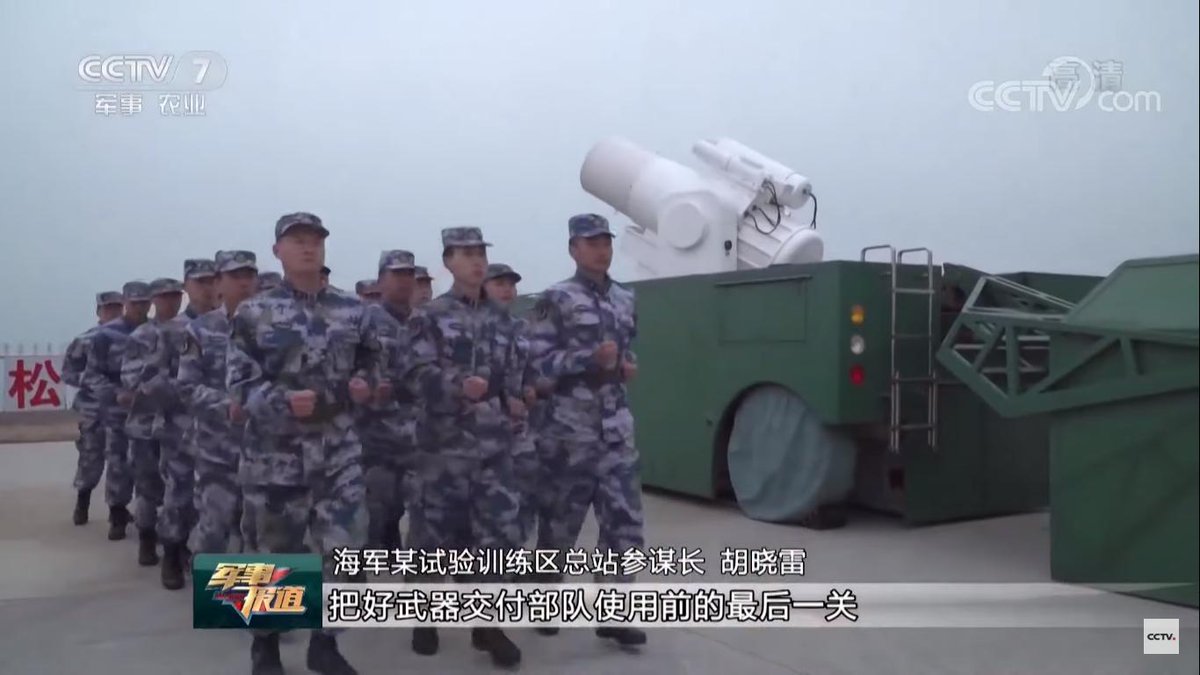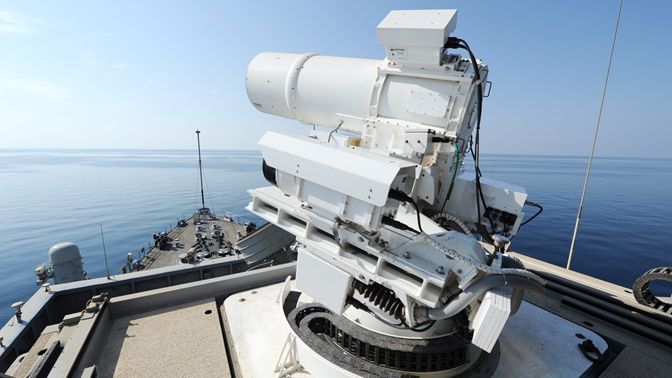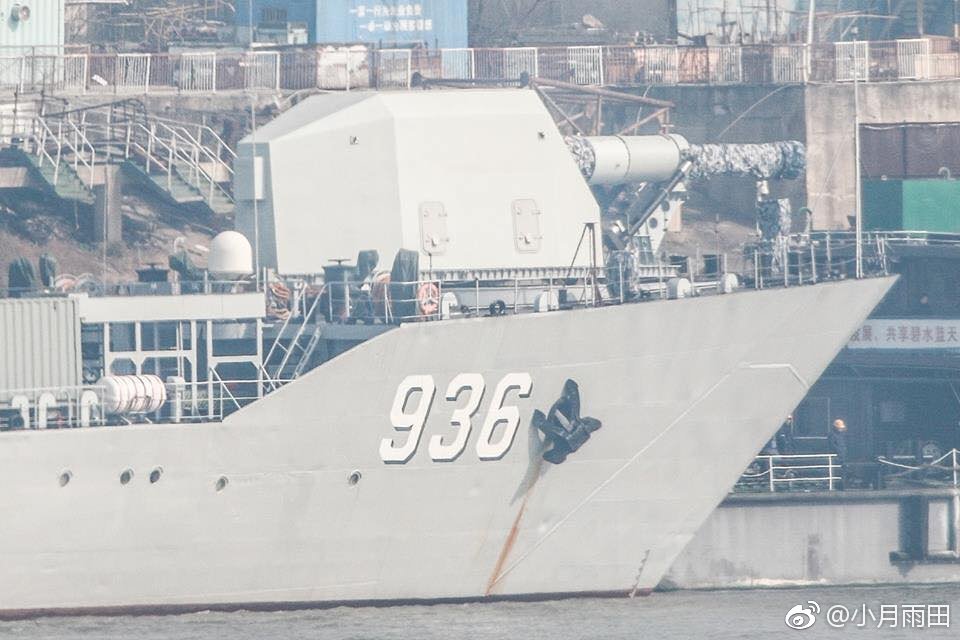China Tests Laser Weapon Similar to U.S. Navy Prototype
China's People's Liberation Army Navy (PLA Navy) is testing a tactical laser system that bears remarkable similarity to the U.S. Navy's Laser Weapon System (LaWS), an anti-surface / anti-air defensive weapon which has been in development since 2014.
The Chinese version appeared in a promotional video broadcast by state-owned channel CCTV, and it is shown in a ground-based, vehicle-mounted application. According to Sina.com, the weapon is intended for both land and sea deployment, both for air defense or close-in surface-to-surface force protection. The outlet suggested that it might find use aboard the PLA Navy's Type 055 destroyers in future years as an alternative to the HHQ-10 surface-to-air missile.

China's tactical laser system (CCTV)

LaWS aboard USS Ponce, 2014 (USN)
China is also working on a ship-mounted electromagnetic railgun, another electrically-powered weapon for surface-to-surface and surface-to-air applications. In January 2018, photos published on Chinese social media showed a turret-mounted device similar in appearance and profile to the U.S. Navy's prototype railgun. The weapons system was mounted on an older tank landing craft, and was accompanied by several shipping containers of supporting equipment, potentially including its power supply. The same ship and device made a second appearance in January 2019.

Suspected Chinese railgun prototype, 2018 (Chinese social media)
Chinese hackers targeting U.S. Navy technology
The intended application and the general profile of the Chinese laser device closely parallel LaWS (video below). While China has not released definitive information about the development process for its new laser system, the U.S. Navy has uncovered evidence of widespread and persistent hacking by Chinese actors targeting naval technology. According to a recent internal review ordered by Navy secretary Richard Spencer, the service's broader R&D ecosystem is "under cyber siege," primarily by Chinese hacking teams.
Last year, Chinese government-sponsored hackers successfully breached U.S. Navy contractors to gain access to plans for a new hypersonic anti-ship missile, leading Spencer to order the review. It was far from the first such attack, however: one Chinese hacking group, TEMP.Periscope, has actively targeted American university researchers, contractors and other organizations involved in the development of marine systems for years. According to cybersecurity firm iDefense, the group has targeted 27 universities with spearphishing attacks, including Woods Hole, MIT, the University of Washington, Penn State, Duke and others.
